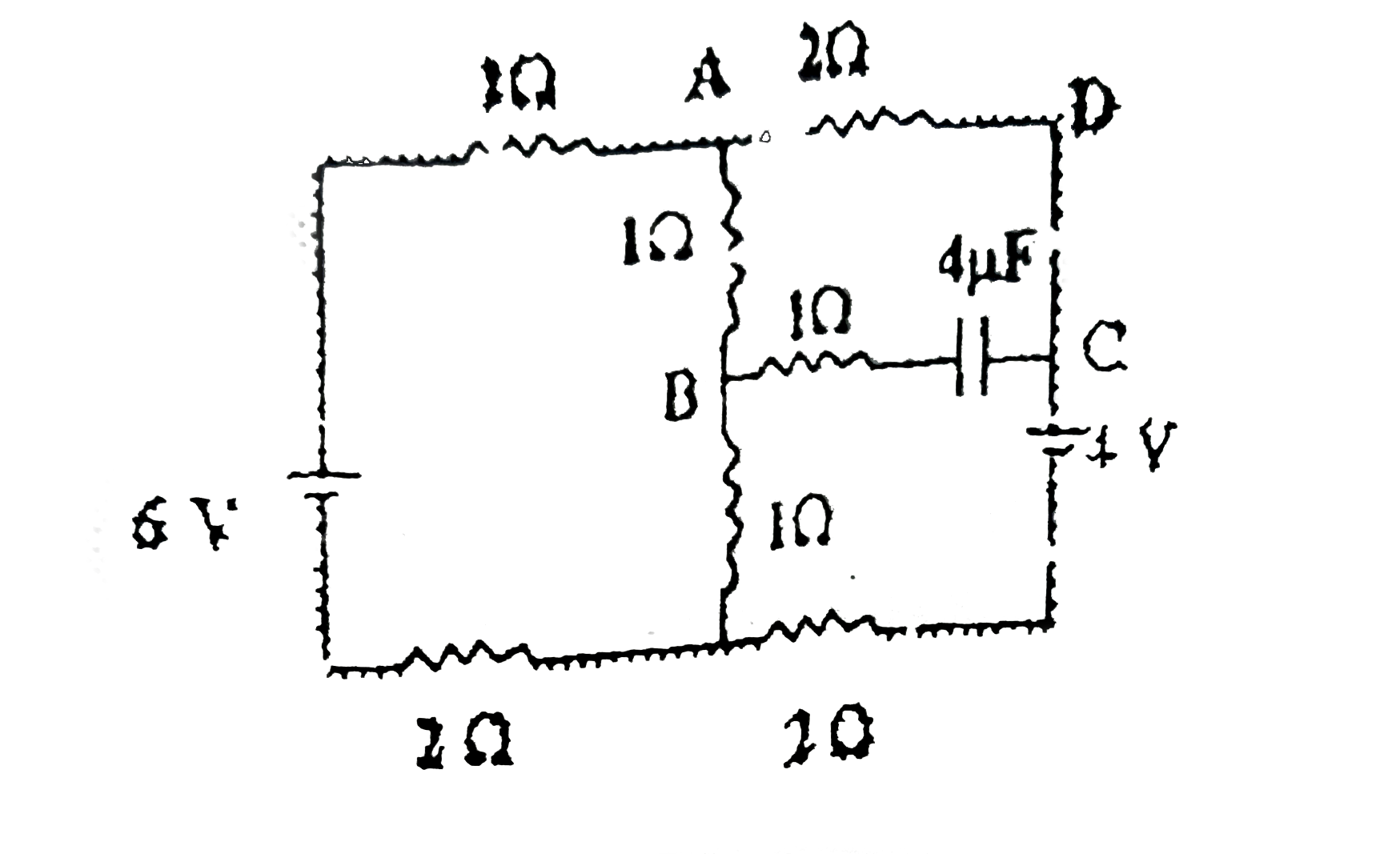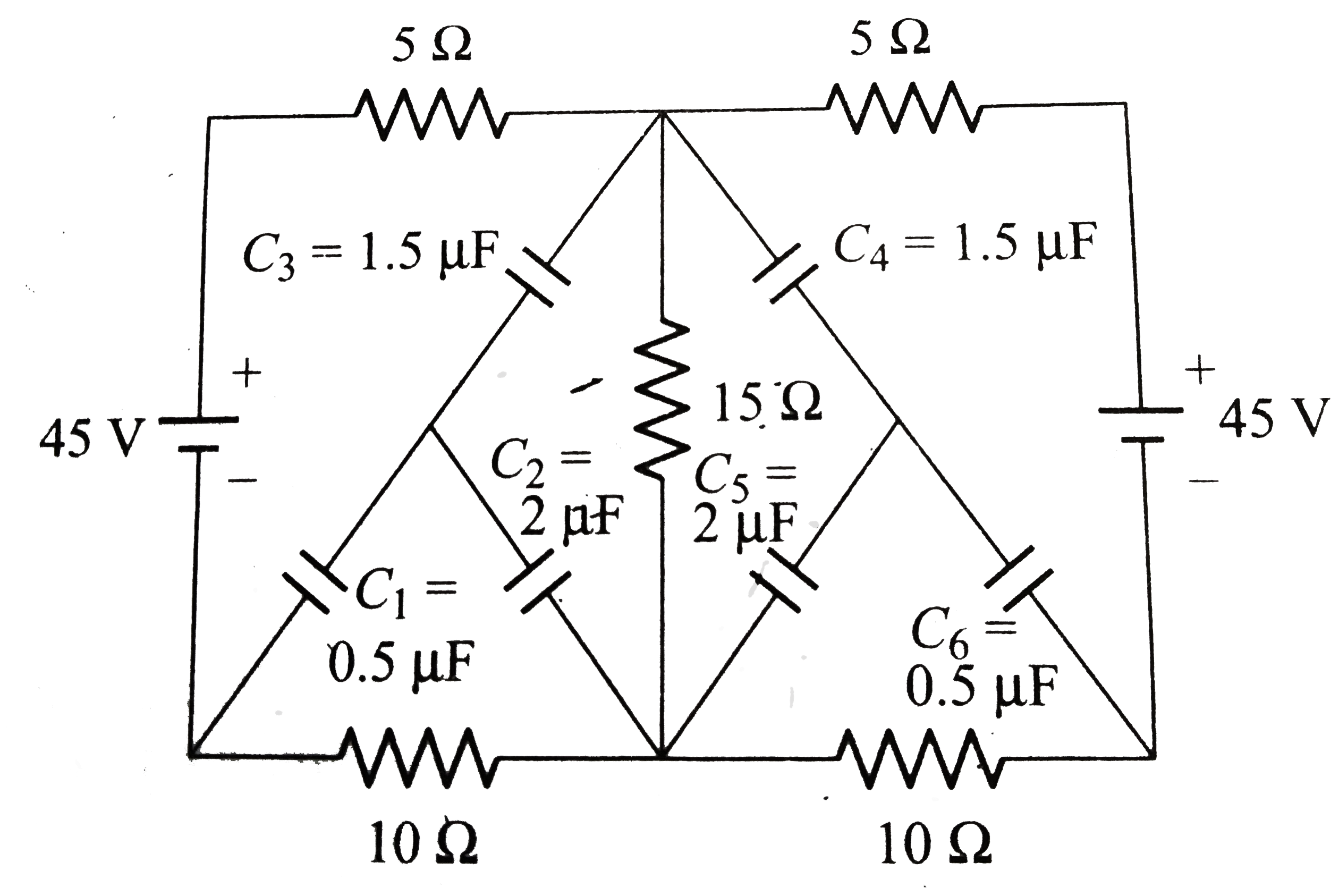In the fig. shown the circuit is in steady state.
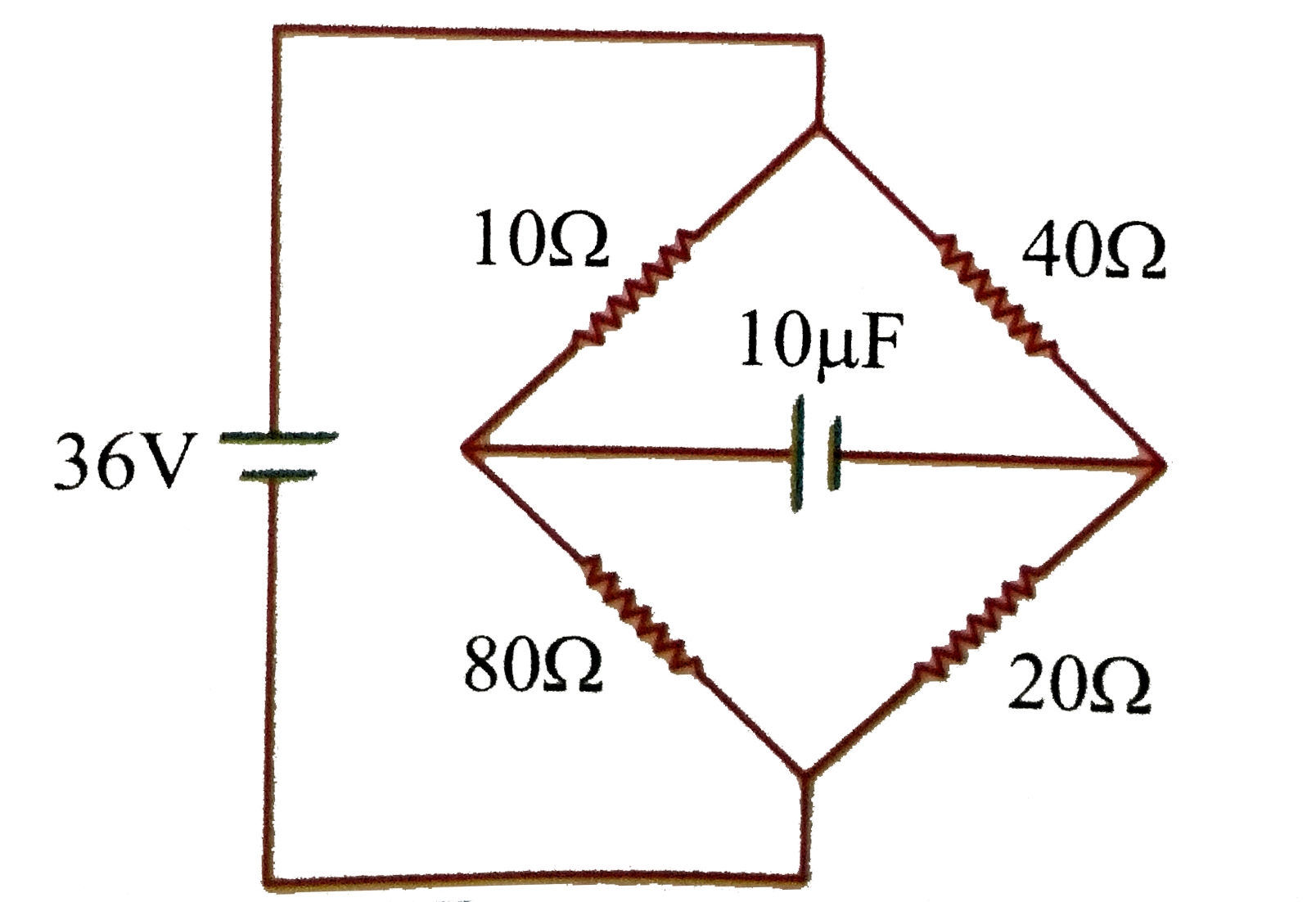
If the battery is disconnected give the capacitor charge as a function of time.
A
Q=200e−3t/10
B
Q=200e−3t/1000
C
Q=200e−3t
D
Q=100e−3000t
Video Solution
Text Solution
The correct Answer is:B
q=q0e−t/rq=200μcτ=RC
R is effective resistance across capacitor.
|
Updated on:21/07/2023
Topper's Solved these Questions
- BOOK - NARAYNACHAPTER - CAPACITANCEEXERCISE - Level-VI28videos
CAPACITANCE
- BOOK - NARAYNACHAPTER - CAPACITANCEEXERCISE - Subjective9videos
CAPACITANCE
- BOOK - NARAYNACHAPTER - CAPACITANCEEXERCISE - NCERT Based13videos
CAPACITANCE
- BOOK - NARAYNACHAPTER - ATOMS EXERCISE - EXERCISE -447videos
ATOMS
- BOOK - NARAYNACHAPTER - COMMUNICATION SYSTEMEXERCISE - Level-II(H.W)25videos
COMMUNICATION SYSTEM
Similar Questions
Knowledge Check
- Question 1 - Select One
In the fig. shown the circuit is in steady state.
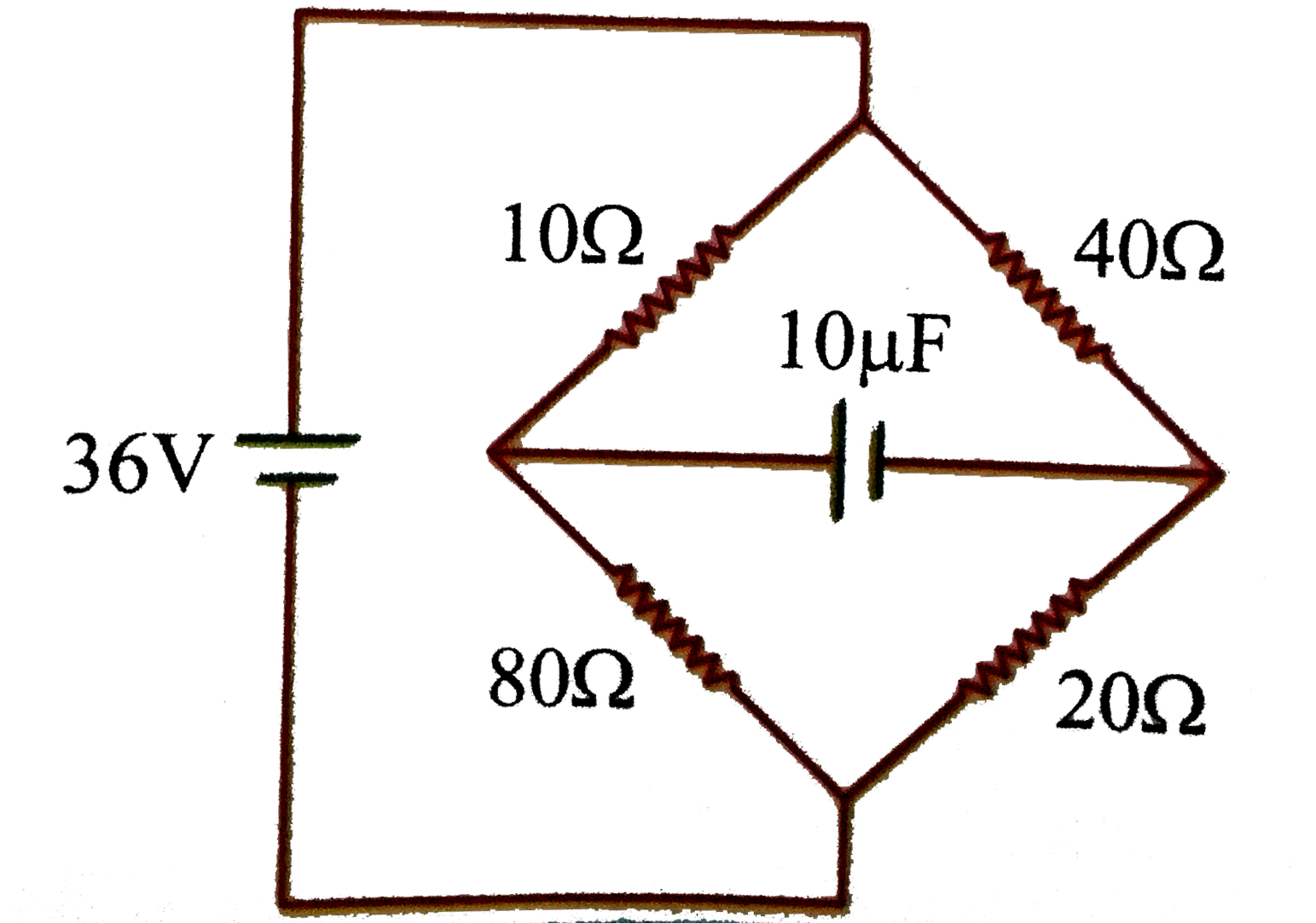
what is the potential difference across the capacitor in steady state ?A5 VB10 VC20 VD40 V - Question 2 - Select One
In the fig. shown the circuit is in steady state.
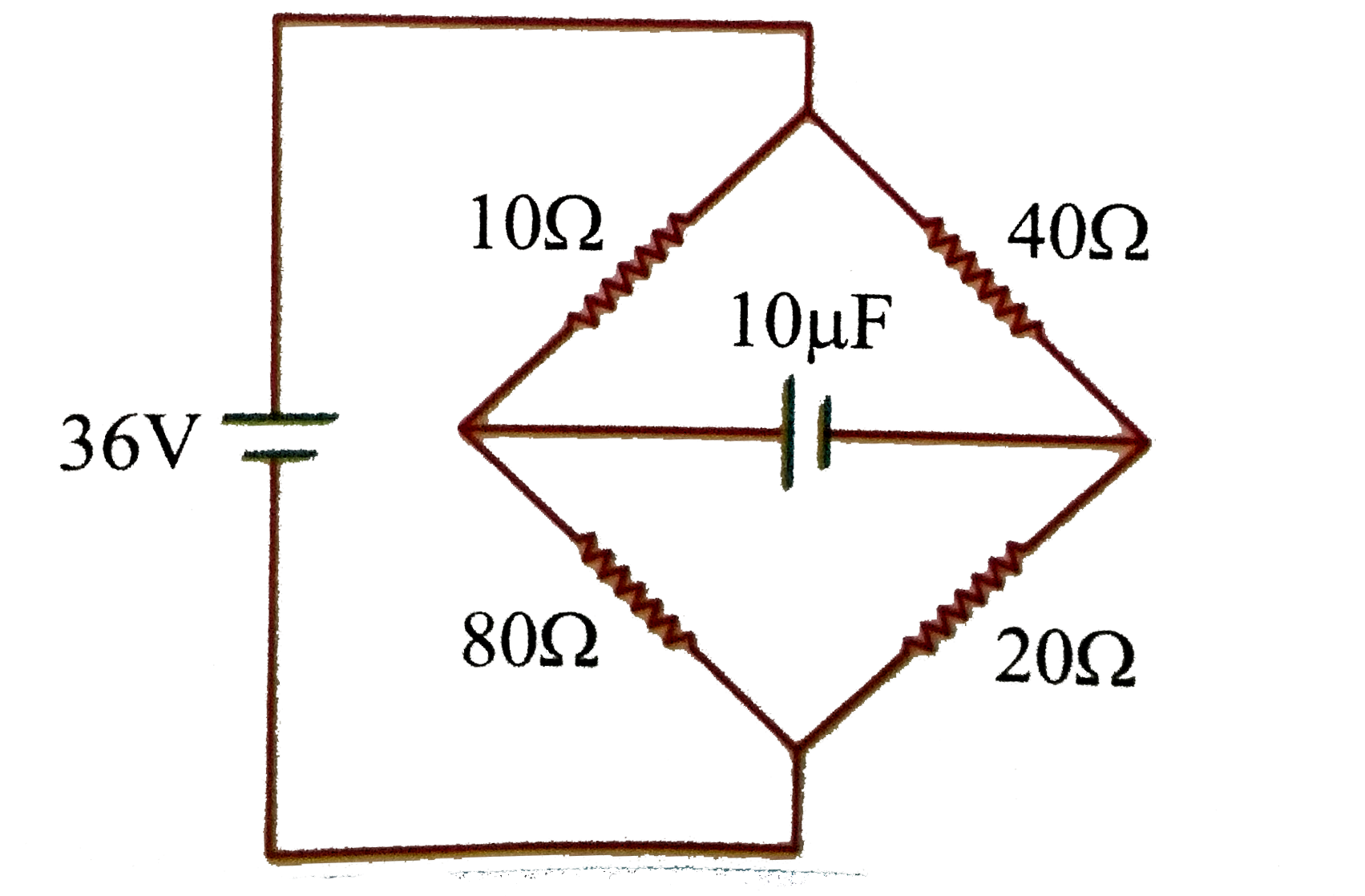
How long does it take for the capacitor to discharge until the potential difference across it becomes 1V ?A1766.1μsB333.34μsC1000μsD333.34s - Question 3 - Select One
The circuit is in a steady state.
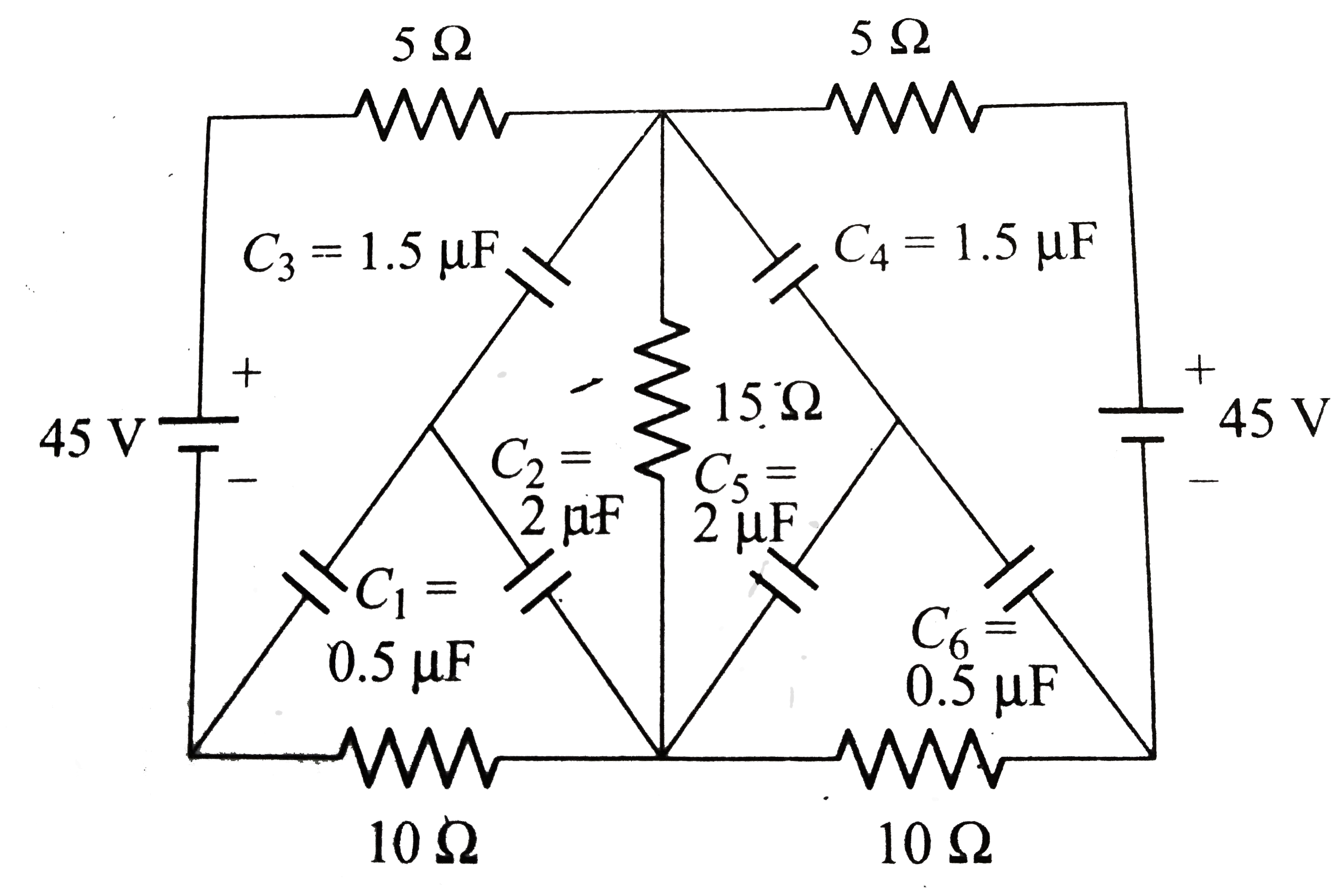
The charge in capacitor C3 isA10μCB30μCC20μCD40μC
The circuit is in a steady state.
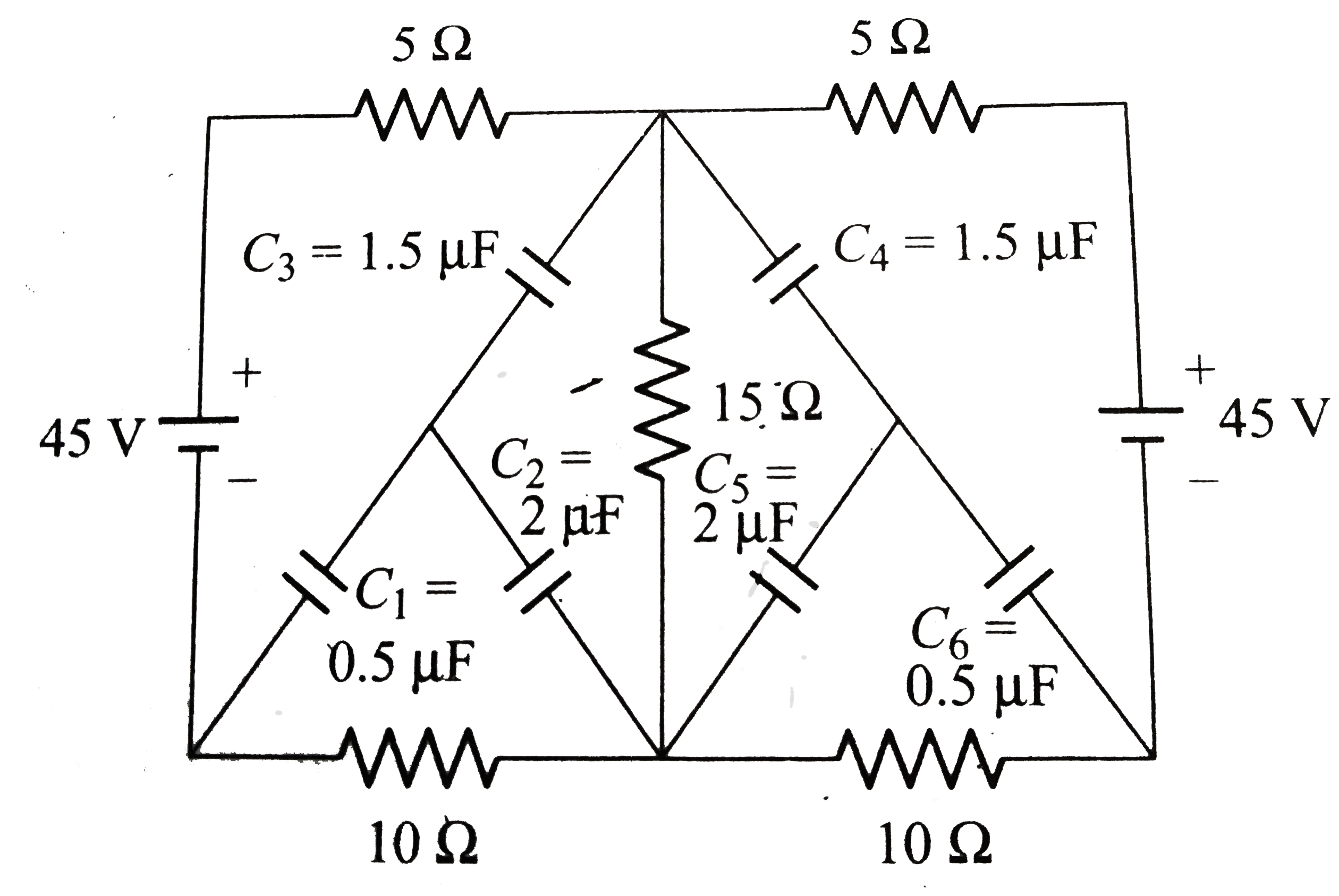
The charge in capacitor C1 isView SolutionThe charge on the capacitor in steady state in the circuit shown is
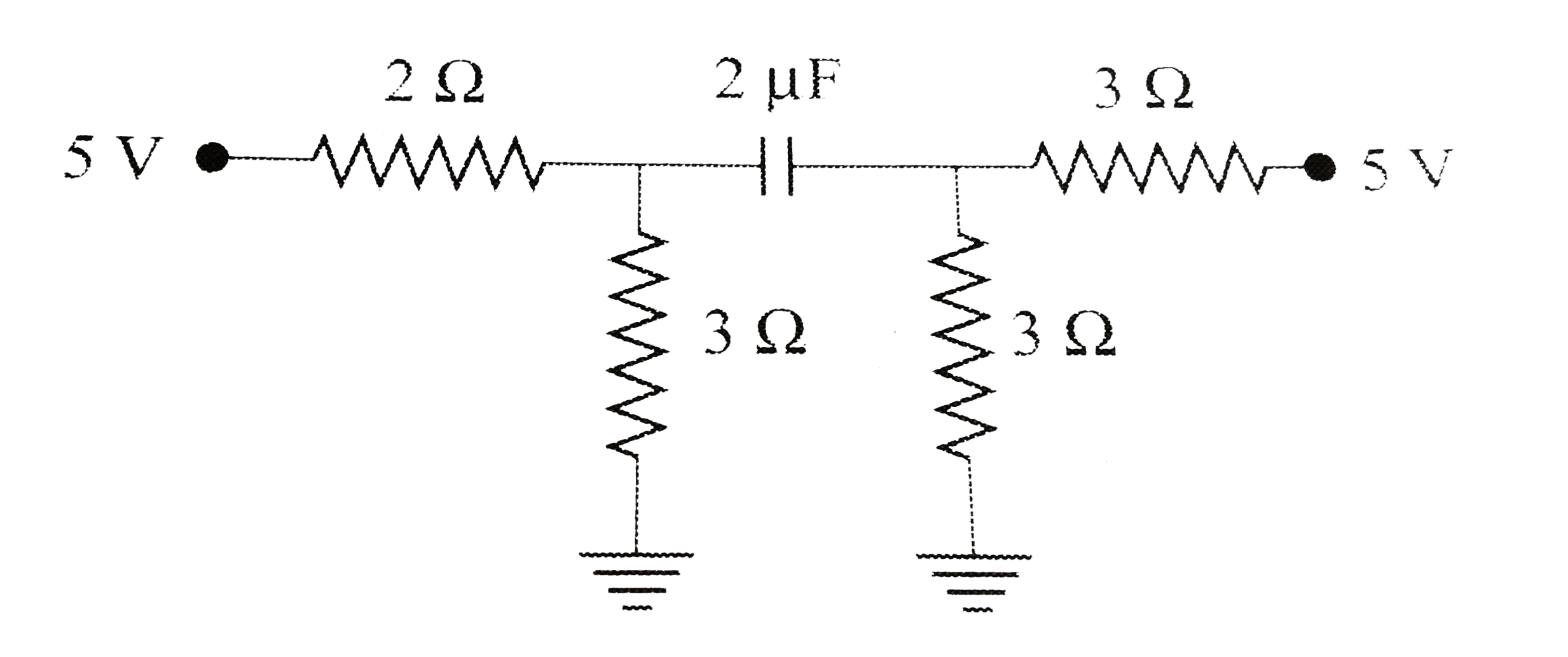 View Solution
View SolutionIn the circuit shown in the figure, in steady state:

The current drawn from the battery isView SolutionIn the circuit shown in the adjacent figure, the batteries are ideal. The charge on the capacitor C is
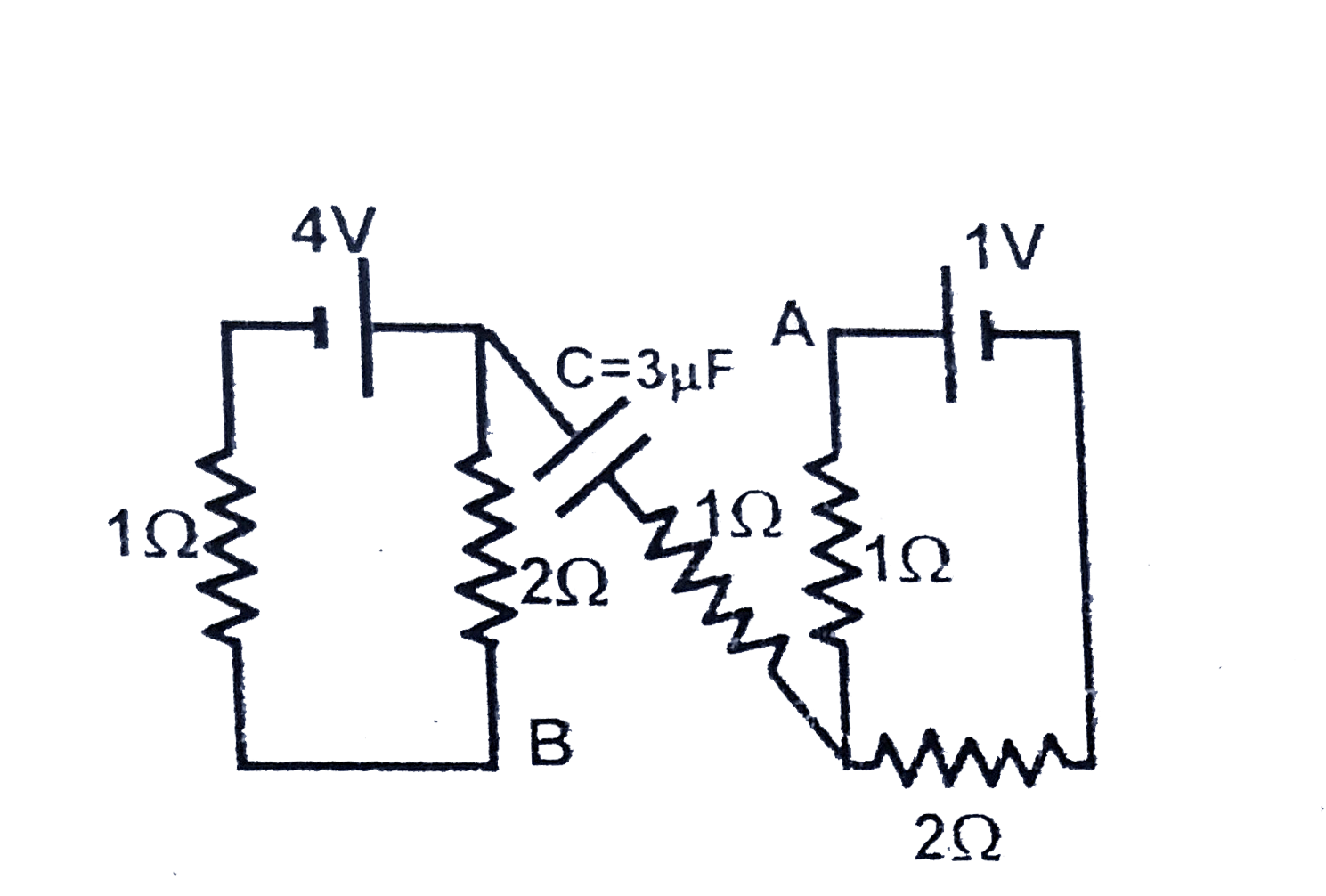 View Solution
View SolutionConsider the circuit shwon in fig. The circuit is in steady state.
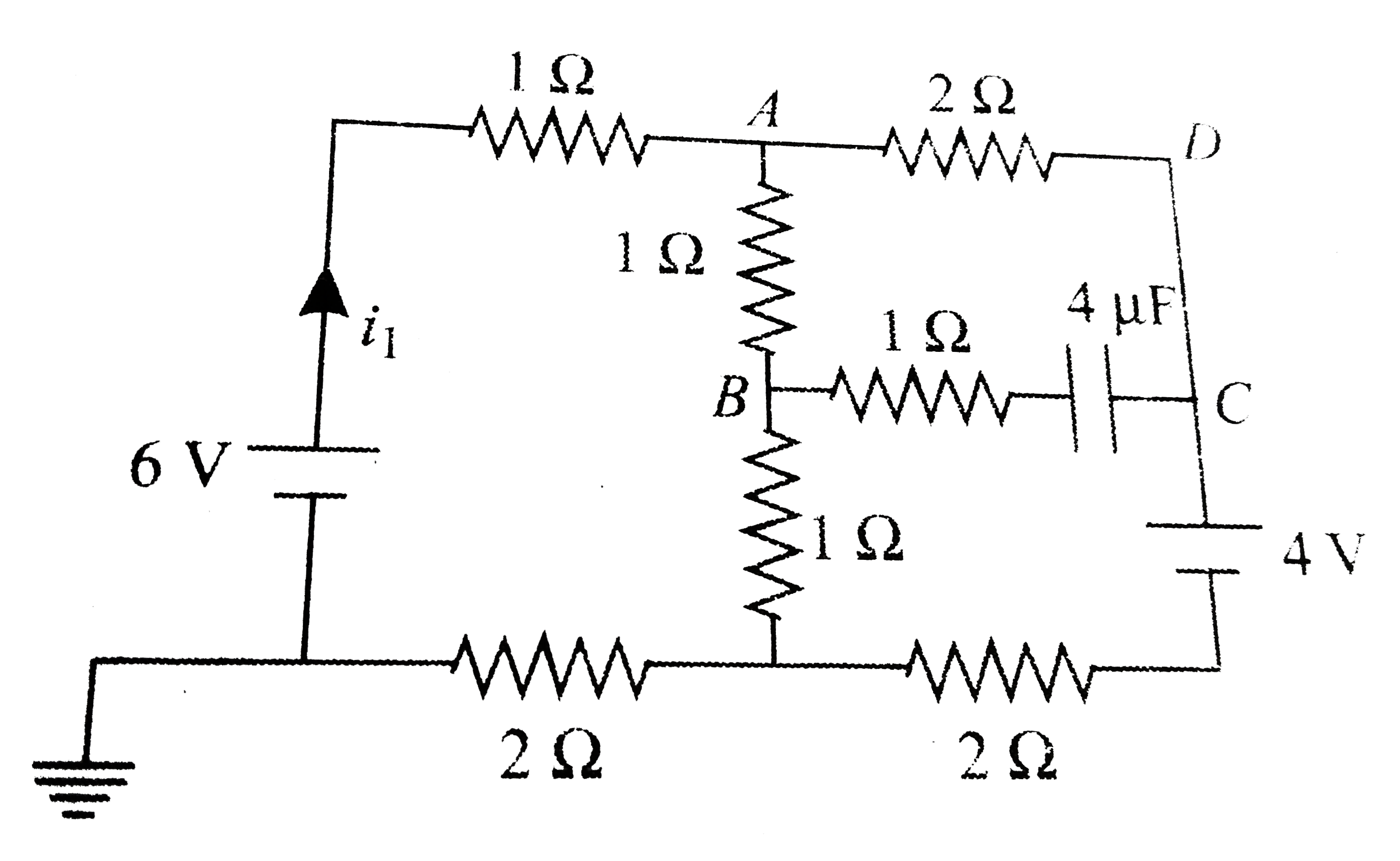
The charge in capacitor isView Solution


